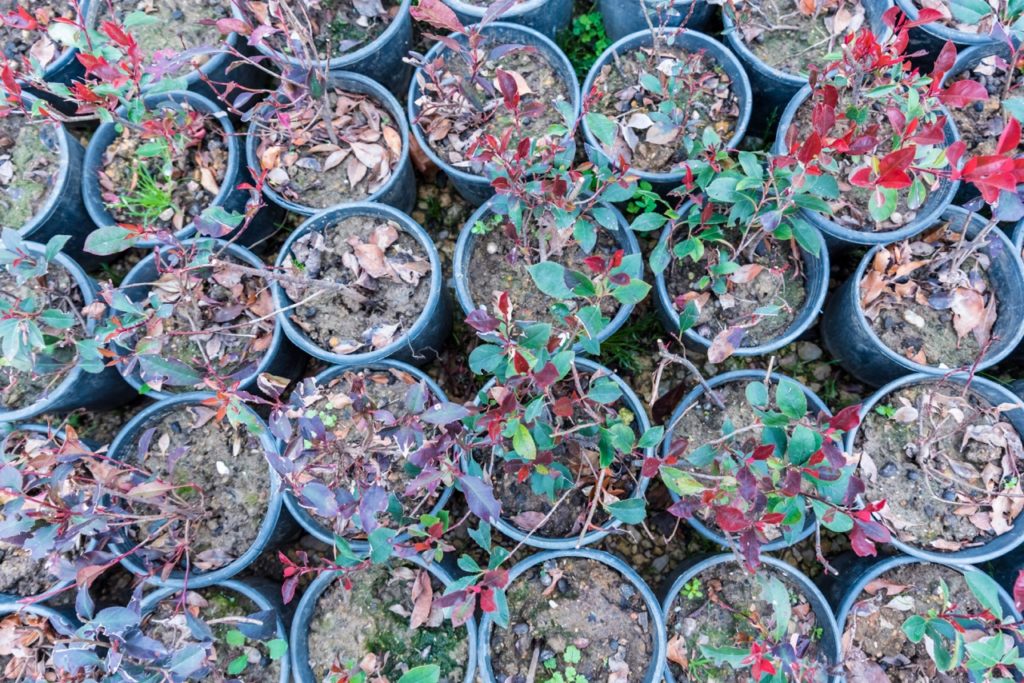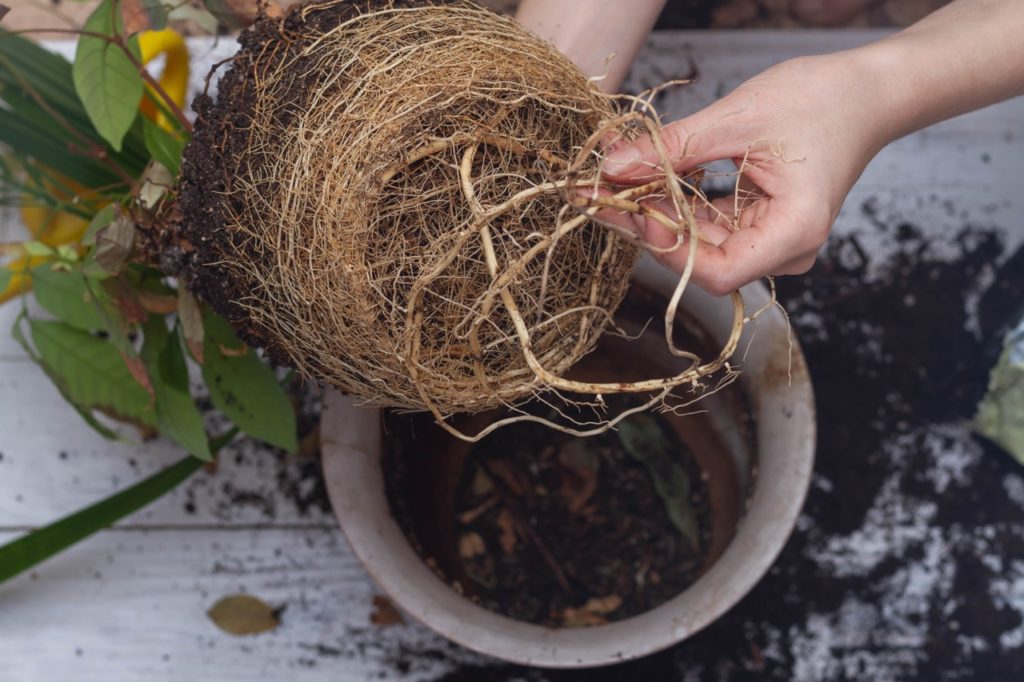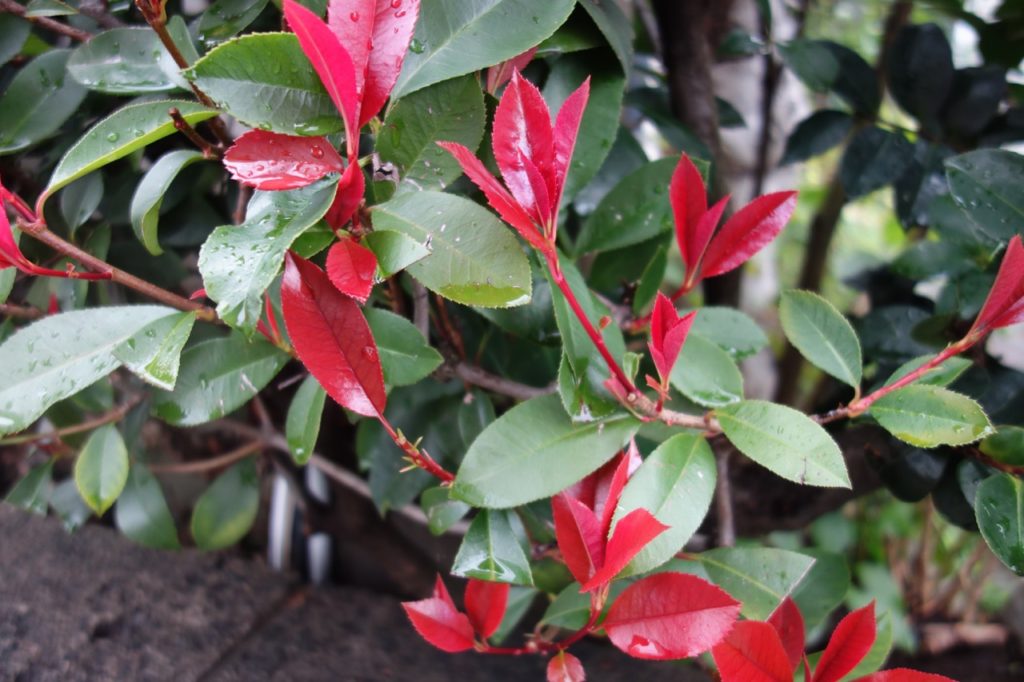Keep On Top Of Vigorous Photinia If Growing In Pots – Experts Share How In This Guide

SHRUBS > PHOTINIA > CONTAINERS
Reviewed By COLIN SKELLY

Colin is a Horticulturist and Horticultural Consultant with experience in a range of practical and managerial roles across heritage, commercial and public horticulture. He holds the Royal Horticultural Society’s Master of Horticulture award and has a particular interest in horticultural ecology and naturalistic planting for habitat and climate resilience.
IN THIS GUIDE
PHOTINIA GUIDES
Common Problems
Container Growing
Propagation
Pruning
Red Robin
Photinias are hardy evergreen shrubs that are appreciated in many regions for their ability to grow into colourful and attractive hedges without much effort on the part of the gardener.
Though so many hedges delight us with thrilling autumn colours, photinias produce wonderful spring and summer foliage that is definitely among the best.
Most cultivars put out young leaves that are in shades of pink and red while a minority have coppery, bronze, marbled or cream-edged foliage.
Photinias are commonly grown in open ground, but you might also be wondering if you can grow these stunning plants in pots.
Can You Grow Photinia In Pots?
In general, most Photinia varieties are planted in open ground where they serve as decorative bushes, hedges and screens.
As to whether they can be grown in pots, the truth is, it depends.
It depends on the variety, as while several varieties attain manageable sizes of up to 2m in height and about 1.5m in spread, several other varieties grow to over 5m and some of these have a fast growth rate to boot.

Obviously, varieties of the latter larger dimensions should not be grown in pots.
Even a photinia that is expected to grow to a relatively modest height and spread, if grown in a container, will require annual pruning for size and shape.
Potted Photinia Varieties
While the biggest varieties will become too large, bulky and unwieldy for any container, you could certainly grow one of the intermediate-sized varieties in a large container, pruning it regularly after it reaches the desired size.

In fact, the aptly-named Photinia ’Little Red Robin’ and the dwarf cultivar Photinia × fraseri were specifically developed for container growing.
Suitable Container Sizes
Firstly, the container should be large enough to accommodate your photinia variety at its given stage of maturity.
The rule of thumb is that the container should be half as high as the above-soil height of the plant.

Most photinia varieties are fairly vigorous growers so it makes sense to choose a container that is a size bigger than the next size up.
The container should have drainage holes and I’d recommend using a terracotta or other clay pot.
If you opt to grow a largeish, spreading variety in a container, a planter would be very suitable.
Compost Requirements
Soil that is light, friable, moderately fertile, and free-draining is best for photinias in containers.

Prepare a mix of garden soil with added grit combined with organic compost and well-rotted manure and blend the two mixes in approximately a 7:3 ratio.
“If you don’t have access to garden soil, garden centres usually stock John Innes No.3, which is formulated to provide the perfect mix of loam and sand for mature shrubs in pots and containers,” shares Master Horticulturist Colin Skelly.
Photinia thrives in soil with a pH level that is slightly acidic.
Potting Up Photinia
Potting up or transplanting a large photinia is a task best done by two people.
In the early morning, soak the photinia in the container.
Water the soil for the new container (which should only be filled partially) or the transplanting site.
Run a flat trowel around the container at the edge of the soil to loosen it.
I find a cement trowel perfect for this purpose.

Lift the container and hold it horizontally and at the same time, try to prise out the soil ball with a spade and push it outward through the drainage holes.
If this proves difficult, simply break the container.
When placing the shrub in the new container or transplanting site, try to spread out the roots.
Be sure that the soil line of the stems is the same as it was in the old container, or just a tad higher.
How Many Can You Plant Per Pot?
You should only plant one per pot.

However, if you use a wide enough planter, you may plant 2 or more of the more reasonably-sized varieties in it to create a containerised decorative hedge.
Potted Photinia Care
The vast majority of photinias, including ‘Red Robin,’ will do best in full sun, otherwise in partial shade.
However, ‘Little Red Robin’ should be sited in partial shade or even full shade and full sun is to be avoided for this variety.
Photinias are hardy to H4 or H5 and they do not have special requirements for aspect or shelter.
However, in the colder parts of the country, especially in winter, it would be wise to avoid northern exposure and keep them in a sheltered spot.

Ensure that they are protected from wet and wind during the winter.
Young plants may need daily watering, whilst mature plants in containers will need less frequent, though regular, watering.
In hot and dry conditions in a full sun spot, more water may be required.
Though open-ground photinias do not need feeding, container-grown ones will do better with a spring shot of fertiliser.
Use a conservative quantity of an all-purpose liquid fertiliser and work it into the soil, taking care to stay away from the roots, or prepare a solution to use as a liquid feed.

